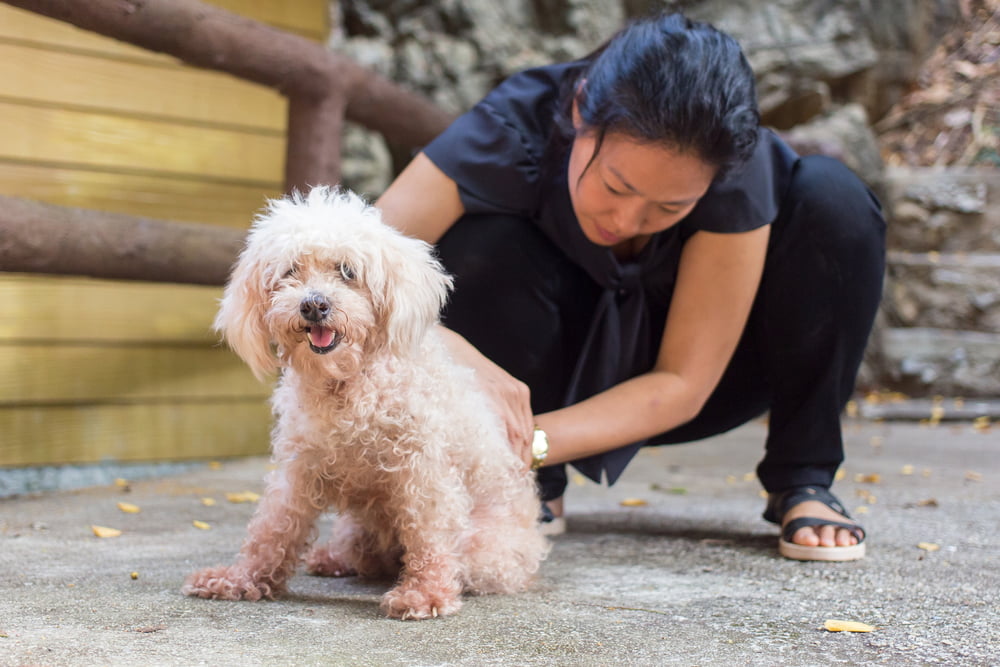9 ways to relieve and prevent flea and tick infestations in dogs

Fleas and ticks are common parasites that affect pets. Fleas tend to move around on their body, while ticks stick to one location. The most common hiding spots include behind the ears, under the collar or front legs, near the elbows, between the paw pads or toes, and at the base of the tail. This article lists a few simple yet helpful ways to treat and prevent fleas and ticks in pets.
Tweeze them out
Since ticks are larger and often slower than fleas, they are easier to remove. To get rid of a tick, first part the fur around it to gain a clear view of the area. Then, using fingers or a pair of tweezers, grab the tick at the point where it is closest to the dog’s skin. Now, pull it out gently with a steady, firm, upward pressure. Once removed, do not release the tick back into nature. Instead, place it in a container or plastic bag and contact a veterinarian. After the process, clean the dog’s wound to reduce the risk of infection.
Use a flea comb
Fleas are smaller and tend to keep moving within the fur, making it more challenging to get rid of them. They can infest multiple areas of the pet’s body simultaneously, causing symptoms like intense itching, hair loss, redness, and scratches. One of the most popular ways to eliminate fleas is using a flea comb. These combs have very fine teeth, which can pull out fleas, flea eggs, and flea dirt. However, experts recommend supplementing this remedy with other flea removal techniques, such as shampoos and preventatives.
Try citrus juice
Citrus is a natural flea repellent. Therefore, rubbing freshly squeezed orange or lemon juice on a dog’s fur can help keep these parasites at bay. However, avoid citrus oil as it is unsafe for dogs and cats. Citrus oil is extracted from the rinds of citrus fruits using a special process and is not found in freshly squeezed juice. While the limonene content in it can ward off insects, if consumed, it may lead to liver damage in pets and irritate their skin. Since citrus oil is a common additive in many cleaning products, exercise caution when using them around the home. Use citrus oil products only in parts of the house where the dog cannot reach.
Dip in a tub
Water can provide instant relief against fleas. Since these parasites do not hold on to hair shafts, the water causes them to slide out of the dog’s fur and drown. While this may not clear all the fleas from a pet’s coat, it can help reduce their number significantly. To amplify this remedy’s effect, use a gentle pet shampoo and brush their coat thoroughly.
Use an anti-tick and flea powder
Another excellent treatment option for flea and tick infestations is using an anti-tick and flea powder a day or two before the dog’s bath. This powder pierces and dehydrates ticks and fleas, as well as their eggs, helping get rid of them with ease.
Get nematodes
Consider adding nematodes to reduce the prevalence of fleas in the yard. Nematodes, tiny worms that eat larvae, can easily be found at local garden or pet stores. They can kill fleas by attaching to them as hosts, reducing the risk of an infestation. However, exercise caution when introducing nematodes, and do not get varieties like heartworm that may infect animals. Also, keep their presence limited to some areas of the yard.
Sprinkle diatomaceous earth
Diatomaceous earth, a fine powder made from the remains of algae, can help eliminate fleas around the house. It can help dry out and kill their eggs, reducing new growth. Just sprinkle diatomaceous earth around the pet’s bedding or on the carpet and let it sit for 48 hours. Ensure no one walks over it during this time. After 48 hours, vacuum and clean this area thoroughly.
Use a bug repellant
Ticks often carry infection-causing bacteria. Hence, it is advisable to take precautionary measures and prevent their spread. One of the easiest ways to do so is using a pet-safe bug repellent. Spray the repellent on the dog’s legs and body before heading out for a walk to deter pests from latching on to their fur.
Clean the home regularly
Fleas are found in larger numbers than ticks and can quickly infest homes. To keep them away, be sure to:
- Vacuum the house frequently, especially carpets and rugs.
- Vacuum fabric upholstery on chairs, couches, and dog beds regularly.
- Empty the vacuum bag outside the house after each use, as fleas can survive inside these bags.
- Wash the pet’s bedding and toys in hot water regularly to remove bacteria and flea larvae.
- Keep the lawn grass mowed, and trim all shrubbery.
- Seal any spaces that may become nesting spaces for outdoor animals.
Besides using these remedies and preventative measures, it is essential to improve a pet’s immunity because tick infestations are less likely to affect healthy dogs. Speak to a veterinarian to devise the best meal and hydration plan to keep pets safe and healthy.
How to identify a flea or tick infestation?
The first step toward eliminating fleas and ticks is identifying their presence. The following are a few common signs of an infestation:
- Itching and scratching around the head and ears
- Red spots on the skin
- Signs of flea dirt (a black-brown powdery substance that sticks to the fur)
- The presence of a tick anywhere around the house
- Bumps or rashes (as an allergic reaction to tick bites)
If the symptoms do not subside even after using home remedies, consult a veterinarian to identify the problem and develop a treatment plan. Flea and tick infestations can lead to complications if ignored.
















